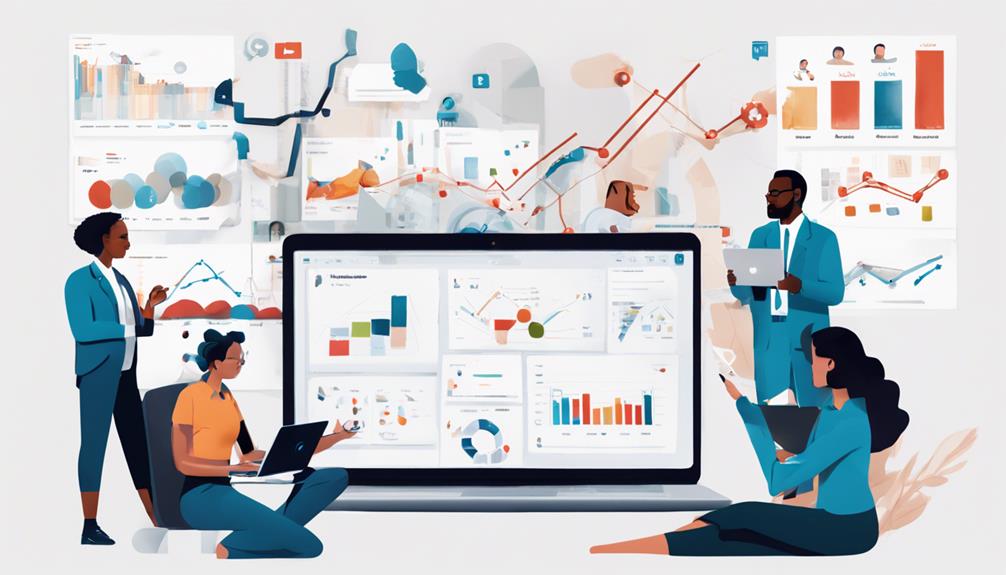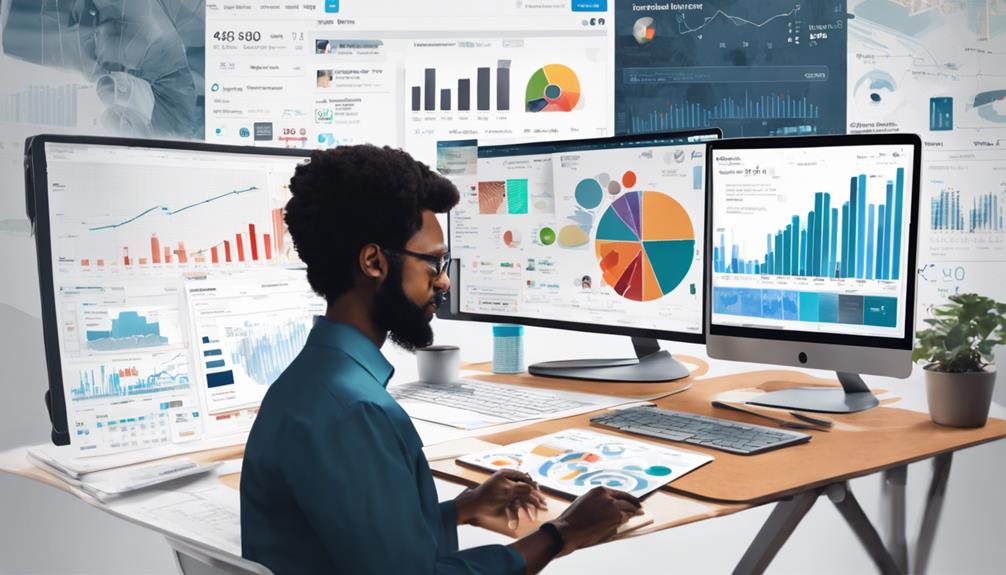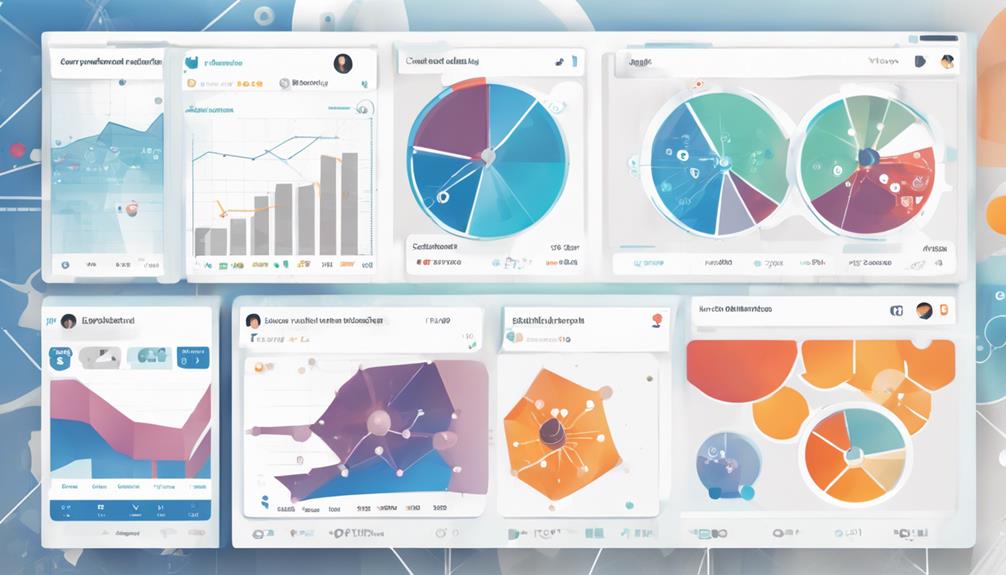
You've probably noticed how LinkedIn's saved posts can clutter your sidebar, but have you ever considered how they might be the key to mastering market predictions? By strategically bookmarking and revisiting influential content, you're equipped to spot emerging trends that could dictate market dynamics. Imagine categorizing these posts to track shifts in your industry and using this insight to make informed decisions—this method could significantly enhance your strategic foresight. Now, think about the advantage you'd hold if you could predict market trends before they become mainstream. Let's explore how you can transform a simple feature into a powerful analytical tool.
Understanding Linkedin's Saved Posts

To effectively manage your professional development, it's crucial to understand how to use LinkedIn's Saved Posts feature. This tool allows you to bookmark valuable content you encounter on your feed, enabling you to easily revisit insights, strategies, and trends relevant to your industry.
You're not just keeping track of interesting articles; you're curating a personalized resource library.
Here's how you do it: when you come across a post that catches your eye, click the bookmark icon in the top right corner of the post. This saves it to your 'Saved Items,' which you can access from your profile menu. It's that simple.
Organizing your saved posts can amplify their utility. Regularly review your saved content to refresh your memory and inspire new ideas.
You can categorize these posts by topic or by the relevance they've to your current projects. This not only keeps your feed tidy but also enhances your ability to retrieve information quickly.
Identifying Key Industry Influencers
After mastering LinkedIn's Saved Posts to curate your personal resource library, it's equally important to identify key industry influencers. These are the individuals who not only shape opinions but also predict and sometimes dictate market trends. Their insights can serve as crucial guides to navigating your industry more effectively.
Start by using LinkedIn's search functionality to find thought leaders in your field. Look for profiles with substantial followings and regular, high-quality post engagements. Don't just count followers; examine the quality of interactions they foster through comments and shares.
Next, delve into the content they produce. Are they posting original insights, or mainly curating others' content? Influencers who generate unique content are often ahead in identifying and setting trends rather than just following them.
You should also pay attention to their professional background. Influencers with deep industry experience or those who've held significant roles tend to have a more profound understanding of the market dynamics.
Analyzing Trends From Saved Content

Once you've curated a collection of posts from key industry influencers, it's essential to analyze this content to discern emerging trends.
Start by categorizing the saved posts into themes. Are there recurring topics or innovative ideas that keep popping up? This clustering helps you pinpoint what's gaining traction in your sector.
Next, assess the sentiment of the discussions. Are experts optimistic about certain technologies or strategies? Perhaps there's a cautious tone around new regulations or market shifts? Understanding these nuances can give you a deeper insight into the industry's direction.
Don't just look at what's being said, but also who's saying it. Are thought leaders unanimous in their views, or are there contentious points causing debate? This can signal areas ripe for disruption or sectors that might be veering towards saturation.
Leveraging Market Insights Effectively
Harness the power of market insights to refine your business strategies and stay ahead of the competition. By tapping into the wealth of information available through Linkedin's saved posts, you're not just observing trends, you're unlocking potential. It's all about applying what you discover directly to your operational and strategic decisions.
Think of each post as a puzzle piece. Collectively, they form a complete picture of the market dynamics relevant to your field. You've got to dig deep into this data. Analyze who's sharing what content and the engagements they receive. This tells you not just what's popular, but what's influential.
Now, how do you turn these insights into action? Start by identifying patterns that align with your business goals. If there's a surge in interest around a particular technology or methodology, consider how your business could adapt or innovate in response. Use this information to anticipate market needs and adjust your offerings accordingly.
Don't just be reactive, be proactive. Set up alerts for keywords relevant to your industry to keep the insights flowing. By doing so, you ensure that you're always equipped with the latest information, keeping you one step ahead in the game.
Predictive Techniques Using Linkedin Data

Building on your understanding of leveraging market insights, let's explore how you can predict future trends using LinkedIn data. First, you'll want to hone in on the analytics from shared posts and articles within your industry. By monitoring the frequency and sentiment of these posts, you can gauge emerging trends and shifts in market sentiment.
Next, consider the power of LinkedIn's networking graphs. You can analyze connections and endorsements to uncover influencers who might sway market dynamics. Tracking their activity gives you a heads-up on potential shifts they're backing.
Don't overlook the job postings and skill sets demanded by top companies on LinkedIn. This information reveals what technologies and services are in rising demand, acting as a precursor to market shifts. By analyzing job trends, you can predict which sectors are poised for growth.
Lastly, harness the data from LinkedIn groups. Discussions and shared content in these groups offer a real-time pulse on industry challenges and innovations.
Case Studies on Successful Predictions
Delving into real-world applications, let's examine several case studies where LinkedIn data accurately forecasted market trends.
In one notable instance, a tech startup leveraged saved posts to predict the booming demand in cybersecurity. By analyzing user interactions and post saves related to cybersecurity content, they anticipated a surge in market needs and adjusted their product development accordingly. The result? A tripled revenue stream within just one quarter following their strategic pivot.
Another case involved a financial consultancy that tracked investment topics trending on LinkedIn. They noticed a significant uptick in discussions and article saves about sustainable investments. By aligning their advisory services to focus more on green technologies and ESG (Environmental, Social, and Governance) compliant companies, they not only gained a competitive edge but also attracted a larger client base interested in ethical investment options.
Lastly, consider the fashion retailer who monitored popular designs and materials saved by leading fashion influencers and designers. They used these insights to forecast upcoming fashion trends and successfully launched a line that was in line with the predicted trends, resulting in record sales and enhanced brand recognition.
These examples underscore how effectively LinkedIn's saved posts can serve as a predictive tool in diverse industries.
Monitoring and Adjusting Strategies

As we've seen from successful market predictions using LinkedIn data, it's equally important to continuously monitor and adjust your strategies to stay ahead. The dynamic nature of the market means what worked yesterday mightn't be as effective today.
You've got to keep an eye on the metrics that matter. For instance, track changes in engagement rates on posts related to market trends and investor sentiments. This data helps you tweak your predictions and strategies effectively.
You also need to be agile. If you notice a sudden shift in market dynamics, be quick to analyze why that's happening. Is it a new industry development or a shift in consumer behavior? Understanding these nuances allows you to adjust your approach in real-time, keeping your predictions relevant and accurate.
Lastly, don't ignore feedback loops. The comments and discussions that unfold under relevant LinkedIn posts can provide invaluable insights into how your market predictions are perceived and what you might be missing.
Engage with these conversations, ask questions, and use the responses to refine your strategy. Remember, the goal isn't just to predict but to adapt and thrive.
Frequently Asked Questions
How Do I Save Posts on Linkedin for Later Review?
To save a LinkedIn post for later, click the bookmark icon in the top right corner of the post. You'll find your saved posts under "My Items" on your profile for easy review later.
Is There a Limit to How Many Posts I Can Save on Linkedin?
No, there isn't a limit to how many posts you can save on LinkedIn. You're free to save as many posts as you need, making it easier to keep track of valuable content.
Can I Organize My Saved Linkedin Posts Into Different Categories?
Yes, you can organize your saved LinkedIn posts into different categories. This helps you keep track of various topics or interests, making it easier to access and review them whenever you need.
Do Saved Posts on Linkedin Expire After a Certain Time?
No, your saved posts on LinkedIn don't expire after a certain time. You can keep them in your saved items as long as you need them for reference or future use.
How Do I Unsave a Post I Previously Saved on Linkedin?
To unsave a post on LinkedIn, go to your saved items, find the post you want to remove, and click the "Unsave" option. It's straightforward, ensuring you keep only relevant content saved.
Conclusion
You've explored how to master market predictions using LinkedIn's saved posts. By identifying industry influencers and analyzing trends, you're well on your way to leveraging insightful data. Remember, it's crucial to engage with content actively and adjust your strategies based on real-time feedback. Keep refining your predictive techniques and learn from successful case studies. Stay proactive and use LinkedIn not just for networking, but as a powerful tool to forecast and shape your industry's future.






